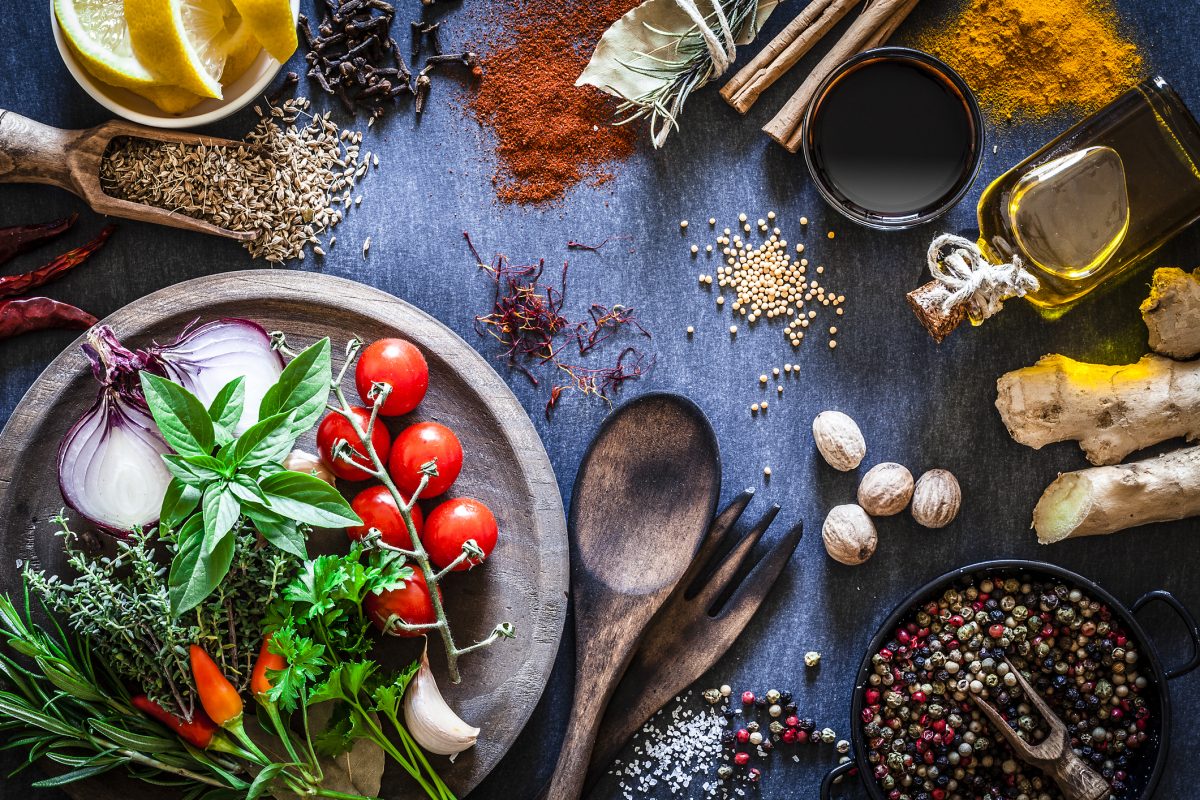Peanut butter and jelly. Cheese and bread. Strawberries and chocolate.
Some foods taste like they were made to be eaten together, but why?
There’s a scientific reason certain foods pair well and others don’t. Chemical compounds in foods are what give them their unique flavors. Foods made up of similar compounds taste good together because they have that chemical element in common.
Complementary flavors
The Scientific American used that theory to create a flavor map connecting foods that have overlapping components. Some foods share a lot of compounds with other foods (roasted beef, strawberry, apple, black tea) while others don’t, which can make them more difficult to pair (walnuts, scallions, parsley).
Here are some common food pairings that share chemical compounds:
- Bread / tomato / cheese
- Apple / honey
- Beef / garlic / bell pepper
- Cheese / dates
- Pork / cilantro / green bell pepper
Here are some unusual pairings that share chemical compounds:
- Chocolate / blue cheese
- Mushrooms / chicken / strawberry
- Beef / soybean / peanut butter / coffee
- Orange / basil / okra
- Cranberry / avocado / lard
Shared compounds don’t guarantee a food combination will taste good — I don’t plan to start sprinkling blue cheese on chocolate ice cream any time soon — but the pairings do provide an interesting place to start, especially when you’re trying out new ingredients.
Perfect pairing
When you’re pairing foods at home, the most important thing to think about is balance. Ideally, a balanced dish will incorporate at least three or four of the five tastes — sweet, sour, bitter, salty and umami (savory) — even if it’s just a squirt of lemon (sour) or a drizzle of honey (sweet).
Here are tips on how to balance out your meals:
If your dish is FATTY balance with acid.
In guacamole, lime juice cuts through the fat of the avocado. On a pulled pork sandwich, a vinegary BBQ sauce adds a tangy finish.
If your dish SALTY counter with sweetness.
Think bacon and tomato, coconut milk in curry or a drizzle of honey on roasted sweet potatoes. It doesn’t have to be too sweet to provide a nice balance.
If your dish is SWEET add salt or spice.
There’s a reason many desserts include a teaspoon of salt or a pinch of cayenne pepper: those contrasting flavors help cut the sweetness so your tongue can taste the ingredients more fully. If you’ve ever had salted caramel or sprinkled salt on watermelon, you’ve tasted this practice.
If your dish is SOFT balance with something crunchy.
Texture is important, too — human taste buds crave variety. It’s why we add a handful of nuts to a salad or smear peanut butter on a stick of celery. Having multiple textures in your dishes stimulates more of your brain cells, which can lead to more enjoyment.
If your dish is SPICY balance it with starch or dairy.
Spicy foods need fat and/or carbs as a counterpoint to their intense heat. It’s why you add a splash of cream to a peppery tomato sauce or serve a spicy stir-fry on a bed of rice. It’s also why you should reach for a glass of milk if you burn your tongue on hot chicken.
Tip: If you eat something too spicy, don’t reach for a soda or ginger ale to stop the burn. Carbonated beverages are astringent, which means they will leave your mouth feeling dry, and that will only make the burn worse.
Get more information about specific health terms, topics and conditions to better manage your health on bcbst.com. BlueCross BlueShield of Tennessee members can access wellness-related discounts on fitness products, gym memberships, healthy eating and more through Blue365®. BCBST members can also find tools and resources to help improve health and well-being by logging into BlueAccess and going to the Managing Your Health tab.



2 Comments
WellTuned provides inspiration and practical advice for healthy living.
WellTuned does not offer medical advice. Any personal health questions should be addressed to your doctor.